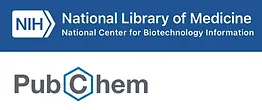AGGIORNAMENTO SCIENTIFICO IN TEMPO REALE FORNITO DA:

Most-Read Full-Text Articles
- Psychoneuroimmunoendocrinological and neuroanatomical basis of suicidal behavior: potential therapeutic strategies with a focus on transcranial magnetic stimulation (TMS)by Hesed Virto-Farfan on 8 Maggio 2025
Suicidal behavior is a complex phenomenon influenced by psychological, environmental, and biological factors. It affects a significant portion of the global population, with more than 720,000 deaths annually and millions of individuals experiencing suicidal ideation. Among those who attempt suicide, only a fraction progresses to a fatal outcome, emphasizing the importance of understanding individual vulnerabilities. This review explores the neuroanatomical basis of suicidal behavior, focusing on...
- Neuromodulation in Chronic Migraine: Evidence and Recommendations from the GRADE Frameworkby Claudio Tana on 8 Maggio 2025
Chronic migraine (CM) affects approximately 2% of the general population and is defined by the persistence of migraine symptoms for at least 15 days per month for at least 3 months. CM is often refractory to common drug treatments and is associated with a significant burden in functions of daily life during ictal phases, productivity loss, and direct costs. Modulation of pain is considered pivotal to reduce its impact and to improve the quality of life among patients with CM. In recent years,...
- Neuromodulation by repetitive paired-pulse TMS at late I-wave intervals in older adultsby Wei-Yeh Liao on 6 Maggio 2025
The efficacy of indirect (I) wave periodicity repetitive transcranial magnetic stimulation (iTMS) on the excitability of primary motor cortex (M1) in young adults can be modified by changing the late I-wave interval. Given that late I-wave activity is altered in older adults, this could contribute to age-related changes in M1 plasticity. To assess this possibility, the present study investigated the effects of iTMS using three late I-wave intervals (4.0, 4.5, and 5.0 ms) on M1 excitability in 17...
- TMS-EEG evidence links random exploration to inhibitory mechanisms in the dorsolateral prefrontal cortexby Mojtaba Chizari on 5 Maggio 2025
Adaptive decision-making in uncertain environments requires balancing exploration and exploitation. Computational models distinguish between directed exploration, involving deliberate information-seeking, and random exploration, characterized by stochastic variability. The neural correlates of these strategies have been investigated in previous studies. However, while prior research implicates the dorsolateral prefrontal cortex (DLPFC) in random exploration, its underlying excitatory and...
- Predictable transcranial magnetic stimulation suppresses corticospinal excitability: a TMS experimentby Napat Sriutaisuk on 4 Maggio 2025
Motor skill learning plays a crucial role in human functioning and is often studied using transcranial magnetic stimulation (TMS) to assess corticospinal excitability (CSE). CSE, which reflects the motor system's responsiveness, is compared across experimental conditions to determine whether a factor facilitates or inhibits motor skill learning. However, variability in stimulation predictability may confound interpretation of CSE measures. In this study, we examined the impact of TMS...
- Assessing Neuromodulation Effects of Theta Burst Stimulation to the Prefrontal Cortex Using Transcranial Magnetic Stimulation Electroencephalography (TMS-EEG)by Stevan Nikolin on 1 Maggio 2025
Theta burst stimulation (TBS), a form of repetitive transcranial magnetic stimulation (TMS), is capable of non-invasively modulating cortical excitability. TBS is gaining popularity as a therapeutic tool for psychiatric disorders such as depression, in which the dorsolateral prefrontal cortex (DLPFC) is the main therapeutic target. However, the neuromodulatory effects of TBS on prefrontal regions remain unclear. Concurrent transcranial magnetic stimulation and electroencephalography (TMS-EEG)...
- Visuomotor paired associative stimulation enhances corticospinal excitability in post-stroke patients with upper-limb hemiparesisby Michela Picardi on 1 Maggio 2025
We assess the effectiveness of a visuomotor paired associative stimulation (vm-PAS) protocol targeting the Action Observation Network (AON) in chronic post-stroke patients with upper-limb mild hemiparesis. Vm-PAS consisted of hand-grasping action observation stimuli repeatedly paired with transcranial magnetic stimulation (TMS) pulses over the ipsilesional primary motor cortex (M1). Fifteen post-stroke patients underwent a session of the vm-PAS and, as a control, of the standard excitatory PAS...
- Cerebellar activity affects distal cortical physiology and synaptic plasticity in a human parietal-motor pathway associated with motor actionsby Elana R Goldenkoff on 30 Aprile 2025
Voluntary movement control depends on plasticity in several interconnected brain regions, including the cerebellum (CB), primary motor cortex (M1), and posterior parietal cortex (PPC). It is thought that one role of the CB is to regulate communication between PPC and M1, but causal evidence for this regulatory role in humans remains lacking. Here, we evaluated how transiently altering activity in CB via intermittent theta burst stimulation (iTBS) affects PPC-M1 connectivity and plasticity by...
- Gamma oscillatory transcranial direct current stimulation of motor cortex enhances corticospinal excitability and brain connectivity in healthy individualsby Ziyu Guo on 29 Aprile 2025
Cortical excitability, the tendency of neurons to respond to various stimuli, is impaired in most neuropsychiatric conditions. Non-invasive brain stimulation can exert therapeutic effects by modulating the cortical excitability. Transcranial direct current stimulation (tDCS) and transcranial alternating current stimulation (tACS) have shown promise in various neuropsychiatric disorders, including improving cognitive abilities and motor function following stroke. Oscillatory transcranial direct...
- Transcranial Magnetic Stimulation Alleviates Spatial Learning and Memory Impairment by Inhibiting the Expression of SARM1 in Rats with Cerebral Ischemia-Reperfusion Injuryby Linlin Jiang on 28 Aprile 2025
The cognitive impairment resulting from stroke is purported to be associated with impaired neuronal structure and function. Transcranial Magnetic Stimulation (TMS) modulates neuronal or cortical excitability and inhibits cellular apoptosis, thereby enhancing spatial learning and memory in middle cerebral artery occlusion/reperfusion (MCAO/R) rats. In this study, we aimed to investigate whether Sterile alpha and Toll/interleukin receptor motif-containing protein 1 (SARM1), a pivotal Toll-like...
- A systematic review of resting-state functional-MRI studies in the diagnosis, comorbidity and treatment of postpartum depressionby Yanyan Tang on 27 Aprile 2025
CONCLUSION: The affected brain regions were highly overlapped with major depressive disorder (MDD), suggesting that PPD may be categorized as a potential subtype of MDD. Considering the negative effects of medication on PPD, future efforts should focus on developing non-pharmacological therapies, such as transcranial magnetic stimulation (TMS) and acupuncture, to support women with PPD in overcoming this unique and important phase.
- New Perspectives on Non-Invasive Cerebellar Stimulation for Social and Affective Functions in Children and Adolescentsby Ludovica Pasca on 26 Aprile 2025
Cerebellar dysfunction affects socio-affective abilities beyond motor control. Recent studies suggest that non-invasive cerebellar neurostimulation can modulate social cognition networks, offering potential therapeutic benefits for children with autism, ADHD, and mood disorders. However, its application in pediatrics remains largely unexplored. This review summarizes emerging pediatric research on cerebellar transcranial magnetic stimulation (TMS) and transcranial direct current stimulation...
- A novel transfer learning framework for non-uniform conductivity estimation with limited data in personalized brain stimulationby Yoshiki Kubota on 25 Aprile 2025
Objective. Personalized transcranial magnetic stimulation (TMS) requires individualized head models that incorporate non-uniform conductivity to enable target-specific stimulation. Accurately estimating non-uniform conductivity in individualized head models remains a challenge due to the difficulty of obtaining precise ground truth data. To address this issue, we have developed a novel transfer learning-based approach for automatically estimating non-uniform conductivity in a human head model...
- Advancing network meta-analysis in non-invasive brain stimulation: Optimizing post-stroke mood through combined therapiesby Rui Li on 23 Aprile 2025
CONCLUSIONS: The findings suggest that optimized combination NIBS therapies offer superior outcomes for post-stroke depression and anxiety. HFrTMS_LFrTMS_WM was the most effective for depression and independence in activities of daily living (ADLs), while tDCS_psychotherapy and TUS_WM were particularly effective for anxiety. These results highlight the clinical potential of integrated NIBS strategies for post-stroke mood optimization and call for further research to refine treatment protocols...
- Effects of Transcranial Magnetic Stimulation on Cognitive-Affective Task-Based Functional Connectivityby Merideth A Addicott on 21 Aprile 2025
Objective: Repetitive transcranial magnetic stimulation (rTMS) uses electromagnetic fields to induce electrical currents in the superficial cortex, and this electric signal is believed to propagate to functionally connected distal brain regions. We previously reported that rTMS targeting the postcentral gyrus affected resting-state functional connectivity with the posterior insula. The current study investigated whether rTMS targeting the postcentral gyrus would affect task-based functional...

















